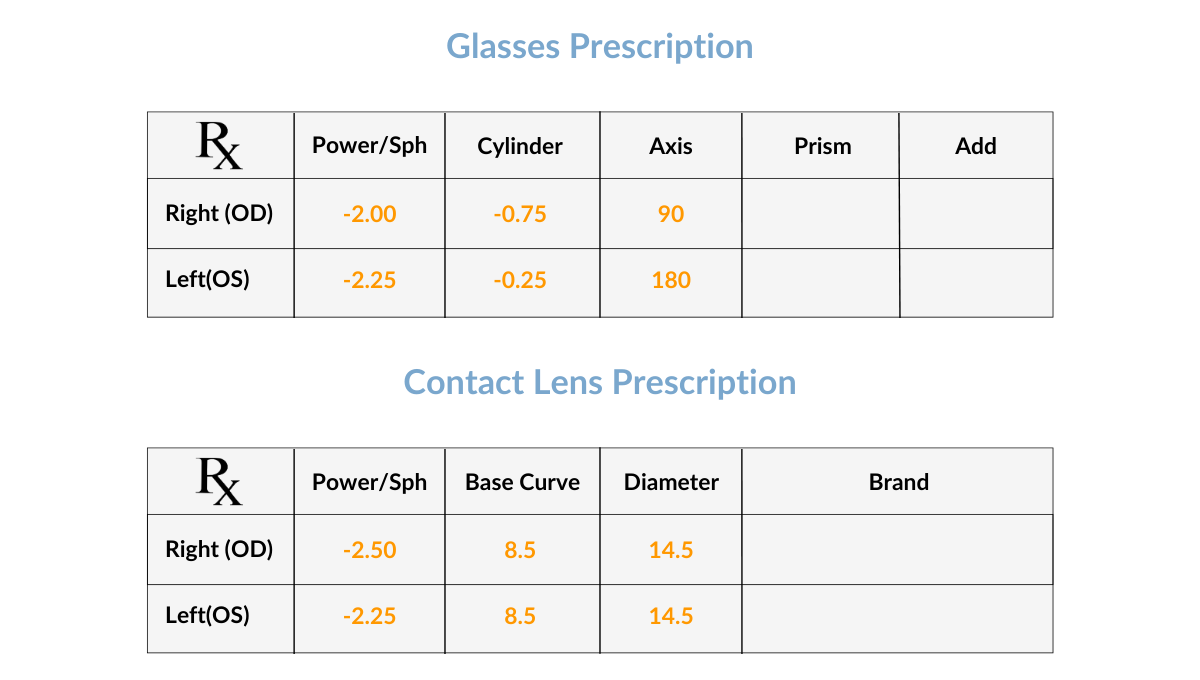In the realm of vision correction, the difference between contact lenses and glasses often generates a plethora of questions, particularly concerning their prescriptions. One common inquiry that arises with regularity is whether a contact lens prescription can be utilized for eyeglasses. This question may seem simplistic on the surface, yet it dives into the intricate nuances of optometry and our ongoing quest for clarity in our daily lives.
At first glance, the duality of contact lenses and glasses poses an apparent compatibility. Both serve the fundamental purpose of enhancing vision, yet the prescriptions for each are strikingly distinct. Understanding the rationale behind these differences unveils a fascinating interplay between optics and individual physiological needs.
To unravel the mystery at hand, one must first comprehend the distinct characteristics of contact lenses and glasses. Glasses are a peripheral form of vision correction, sitting approximately 12 millimeters away from the eyes. Their correctional lenses function by altering the light that enters the eye, compensating for various vision impairments such as nearsightedness, farsightedness, and astigmatism. In contrast, contact lenses rest directly on the cornea, providing a more immediate and unobstructed path for light. This spatial difference establishes the crux of the matter: the measurements and specifications required for each type of prescription diverge significantly.
The lens power, expressed in diopters, tends to differ between contacts and glasses, primarily due to the distance from the lens to the retina. With glasses, the prescribed power is adjusted to account for this distance; typically, the correction needed for contacts is slightly less strong than that for glasses. Consequently, utilizing a contact lens prescription for glasses might produce optical distortions or an unsatisfactory visual experience. This discrepancy beckons a deeper examination into how our eyes interact with different corrective methods.
Taking the biological intricacies into account, the curvature of the contact lens is designed to align perfectly with the corneal surface, while glasses utilize a spherical curve designed for distance. The adaptation required by the eye when switching from lenses to glasses can also provoke strain. Some individuals may find that their eyes become fatigued or experience discomfort when wearing glasses that do not accommodate their natural visual requirements.
An additional layer of complexity is introduced by the designation of lenses. Each type—whether it be single vision, bifocal, or progressive—carries its unique prescription parameters. For instance, bifocal and progressive lenses require meticulous measurements of optical centers and additional adjustments based on the wearer’s alignment of sight. On the other hand, contact lenses necessitate a fitting process that prioritizes curvature and diameter—all pivotal elements that contribute to a tailored vision experience. This variances further reinforces the notion that prescriptions are far from universal.
Yet, it is not solely the numerical differences in prescriptions that warrant contemplation. The psychological and emotional dimensions of vision correction cannot be understated. Many individuals harbor distinct preferences influenced by their lifestyles and aesthetic inclinations. For example, athletes often lean towards the convenience of contacts for their unobstructed field of vision during physical activities. Conversely, some individuals find comfort in the more pronounced aesthetic statement made by a stylish pair of glasses. Both choices resonate with underlying factors that shape our visual identities.
As vision correction technology evolves, a plethora of hybrid options emerge, challenging traditional categories. Innovations such as scleral lenses or hybrid lenses exemplify the forward momentum in this arena. These nuanced products may offer a bridge between the two worlds—bringing together the versatility of contacts with the stability of glasses. They cater to diverse visual needs while minimizing the hassle of switching between modalities.
Moreover, eye care professionals regularly emphasize the importance of regular reviews of prescriptions. A prescription is not a static document—it requires periodic reevaluation to account for changes in vision over time. Thus, even if one has a valid prescription for contacts, it is paramount to ascertain that such a prescription aligns correctly with the requirements for glasses.
For those oscillating between their choices, regular consultations with an eye care professional provide a pivotal avenue for clarity. Professionals possess the expertise to determine the most appropriate course of action, ensuring that both lenses and glasses serve their intended purposes effectively. Regular eye exams not only safeguard ocular health but also adapt visual corrections to the evolving landscapes of our lives.
In conclusion, while it may be tempting to assume that a contact lens prescription can seamlessly translate into a glasses prescription, the intricacies of visual correction reveal a more complex narrative. From the spatial dynamics of lens positioning to the psychological engagements of vision choices, the distinctions between these two methods echo through every facet of our visual experiences. Understanding these subtleties opens pathways for informed decisions, empowering individuals not only to see clearly but to navigate the world with confidence and clarity. Vision, after all, is an adventure—one that invites contemplation, curiosity, and constant discovery.
